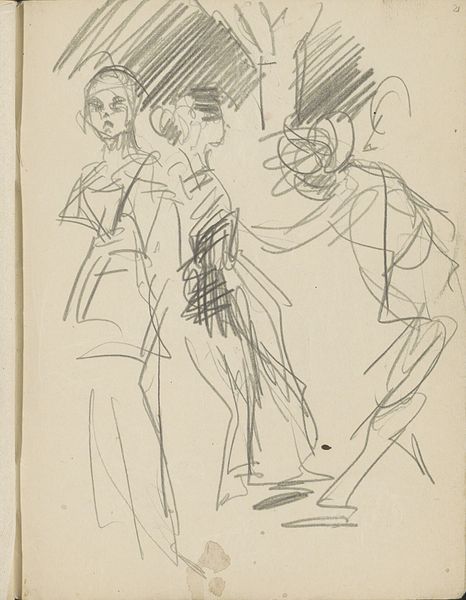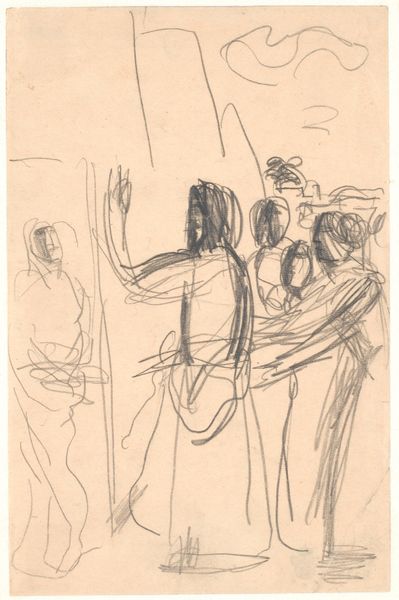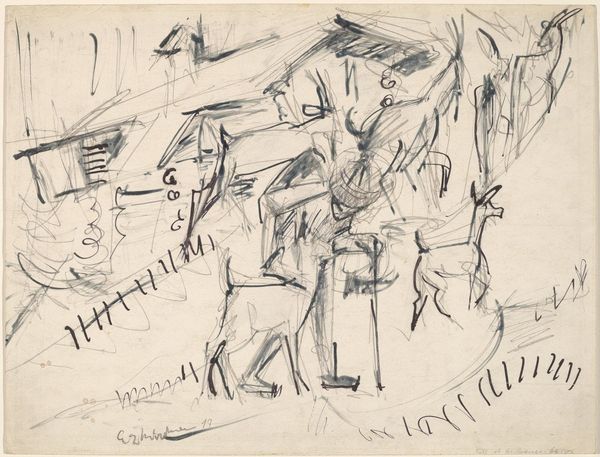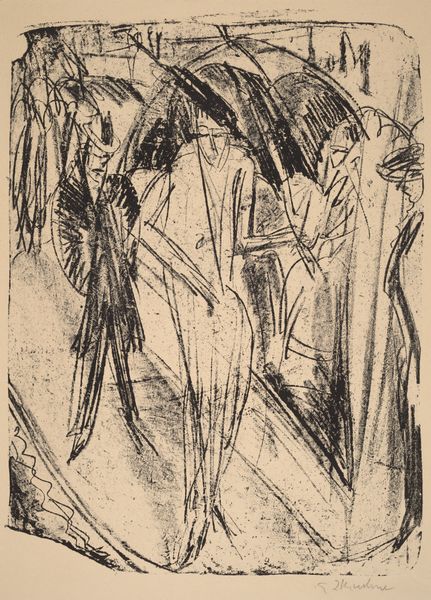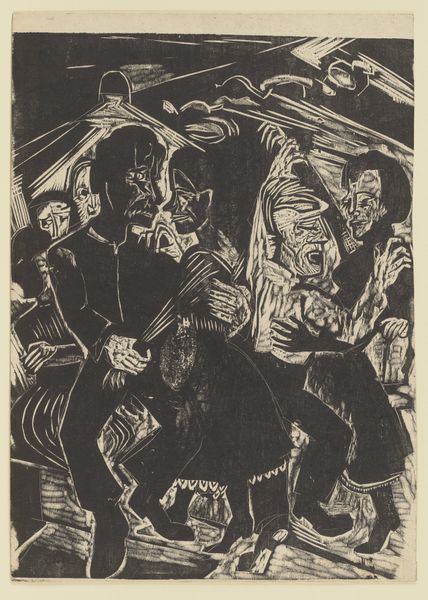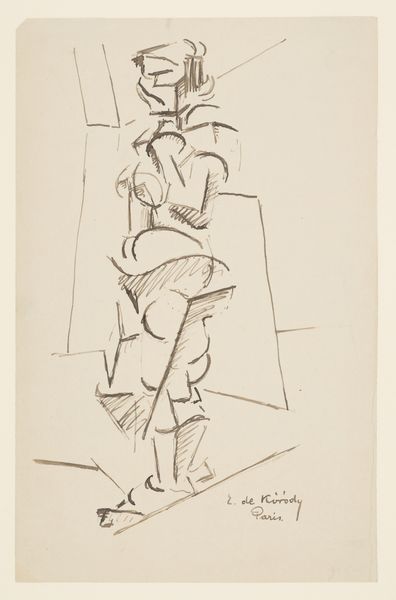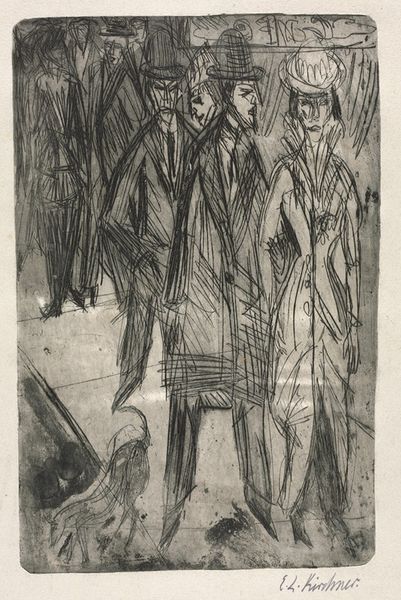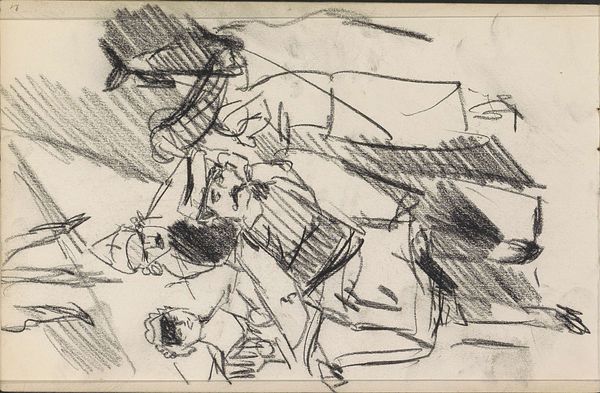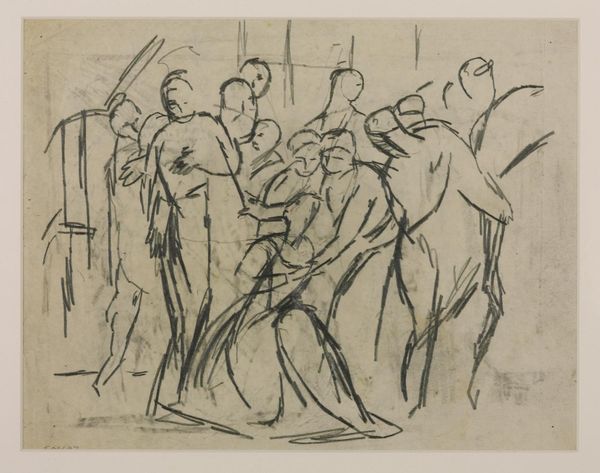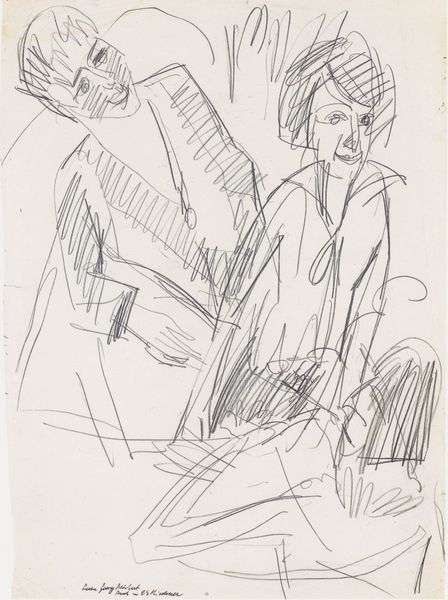
drawing, chalk, charcoal
#
drawing
#
figuration
#
expressionism
#
chalk
#
charcoal
Copyright: Public Domain
Editor: This is "Dancing Peasants," a drawing by Ernst Ludwig Kirchner, circa 1920. It's done with charcoal and chalk, I think. It strikes me as simultaneously lively and kind of somber, especially the faces. How do you interpret this work? Curator: The drawing carries an interesting duality, as you note. The figures, though engaged in a dance which implies merriment, seem burdened or pensive, perhaps reflective of the period following the First World War. Consider the angular lines and stark contrast. What emotional resonance do these choices evoke? Editor: I see… The sharp lines and heavy shading definitely add a layer of anxiety. Is that a common thread in Expressionist works, to portray unrest even within moments of joy? Curator: Precisely. Expressionism often grapples with psychological and societal tensions. Here, Kirchner might be using the archetype of the peasant dance – traditionally a symbol of community and celebration – to subtly convey the disruption and uncertainty of the era. Note how their faces lack distinct features, turning them into vessels of collective feeling rather than individuals. Does that resonate with you? Editor: Yes, it does. It makes me think about how cultural trauma can be passed down, altering even our most basic expressions of joy. It’s as if the dance itself is a ritualistic act to keep despair at bay. Curator: Exactly. Symbols embedded within art act as conduits, channeling collective memory. Recognizing these motifs grants us insight into the emotional landscapes of past eras, informing our present experience. What have you learned? Editor: That even the most simple subject matters can reflect powerful cultural undercurrents. Thanks, that gave me a lot to think about. Curator: Indeed. Observing the emotional weight symbols carry enriches our understanding and connects us across time.
Comments
No comments
Be the first to comment and join the conversation on the ultimate creative platform.
